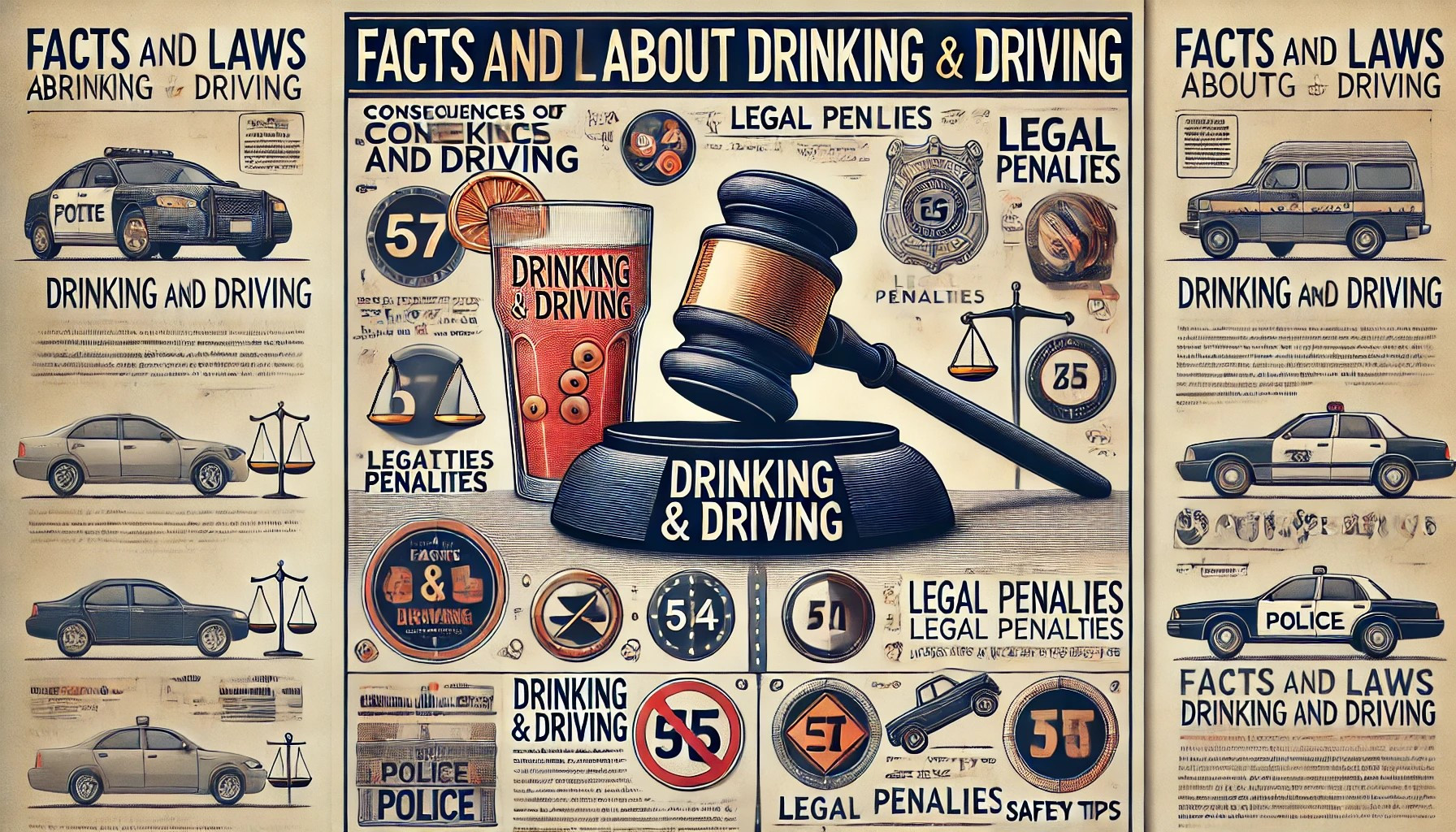Facts and Laws about Drinking and Driving
Drinking and driving is a serious issue that affects thousands of lives every year. Understanding the facts and laws surrounding this dangerous behavior is crucial for anyone behind the wheel. This blog will explore the critical aspects of drinking and driving, the consequences, and the laws designed to prevent it. At Get Drivers Ed, we emphasize the importance of safe driving practices, including the dangers of impaired driving.
The Dangers of Drinking and Driving
Drinking and driving significantly impairs your ability to operate a vehicle safely. Alcohol affects your motor skills, reaction time, and judgment, increasing the risk of accidents. According to the National Highway Traffic Safety Administration (NHTSA), nearly 30 people die every day in the United States due to drunk-driving crashes. This statistic highlights the severe impact of impaired driving on public safety.
How Alcohol Affects Driving
Reduced Reaction
Time: Alcohol slows down the brain's response time, making it difficult to react quickly to sudden changes in traffic or road conditions. This delay can be fatal, especially in situations that require immediate action.
Impaired Judgment:
Under the influence of alcohol, drivers are more likely to make poor decisions, such as speeding, making illegal turns, or ignoring traffic signals. Impaired judgment can lead to dangerous driving behaviors that increase the likelihood of accidents.
Decreased Coordination:
Alcohol affects motor skills, making it challenging to steer, brake, or accelerate properly. This loss of coordination can cause drivers to lose control of their vehicle, particularly in complex driving situations.
Blurry Vision:
Alcohol consumption can lead to blurred vision, making it harder to see road signs, pedestrians, and other vehicles. Visual impairment significantly reduces a driver's ability to navigate the road safely.
Legal Limits and Penalties
Different countries and states have varying legal limits for blood alcohol concentration (BAC). In the United States, the legal limit is generally 0.08% for drivers aged 21 and over. However, even a small amount of alcohol can impair driving abilities.
First Offense:
Penalties for a first-time DUI (driving under the influence) offense typically include fines, license suspension, and mandatory alcohol education programs. These penalties are designed to deter individuals from repeat offenses and to educate them about the dangers of impaired driving.
Repeat Offenses:
Subsequent DUI offenses carry harsher penalties, including longer license suspensions, higher fines, and possible jail time. Repeat offenders may also face mandatory installation of an ignition interlock device (IID) and participation in alcohol treatment programs.
Zero Tolerance Laws:
Many states have zero-tolerance laws for drivers under 21, meaning any detectable amount of alcohol can result in penalties. These laws are intended to prevent underage drinking and driving by enforcing strict consequences.
Ignition Interlock Devices
In many states, offenders may be required to install an ignition interlock device (IID) in their vehicles. This device prevents the car from starting if the driver's BAC is above a preset limit. IIDs are an effective tool in reducing repeat offenses by ensuring that the driver remains sober while operating the vehicle. Studies have shown that IIDs can reduce repeat DUI offenses by up to 70%.
The Role of Drivers Ed in Preventing Drunk Driving
At Get Drivers Ed, we believe that education is key to preventing drunk driving. Our drivers ed courses cover the dangers of impaired driving extensively, emphasizing the importance of making safe choices. By educating new drivers about the risks and legal consequences, we aim to create a culture of responsible driving.
Real-life Consequences
The consequences of drinking and driving extend beyond legal penalties. Accidents caused by impaired drivers can result in severe injuries or fatalities, leaving lasting impacts on families and communities. Understanding these real-life consequences is essential for drivers to appreciate the gravity of their actions. Personal stories and case studies are often included in our curriculum to highlight the devastating effects of drunk driving.
Preventive Measures
Plan Ahead:
If you plan to drink, arrange for a designated driver or use public transportation. Planning ahead ensures that you have a safe way to get home without risking your life or the lives of others.
Stay Overnight:
If you are at an event where alcohol is being served, consider staying overnight rather than driving home. Many accidents occur when individuals try to drive home after drinking without considering the risks.
Use Ride-Sharing Services:
Ride-sharing apps like Uber and Lyft provide safe transportation options if you have been drinking. These services are readily available and offer a convenient alternative to driving under the influence.
Know Your Limits:
Understand how alcohol affects your body and avoid driving if you feel even slightly impaired. Everyone's tolerance to alcohol is different, and it's crucial to recognize when you are not in a condition to drive.
Conclusion
Drinking and driving is a preventable cause of accidents and fatalities. By understanding the facts and laws, and through proper education, we can work together to reduce the incidence of impaired driving. At Get Drivers Ed, we are committed to promoting safe driving practices through our comprehensive drivers ed programs.
If you're ready to learn more about safe driving practices and want to enroll in a trusted drivers ed program, visit Get Drivers Ed. Make the responsible choice and drive safely. By educating yourself and others, you can help create safer roads for everyone.
Remember, the choices you make behind the wheel affect not only your life but the lives of countless others. Let's commit to making safe, responsible decisions every time we drive.

